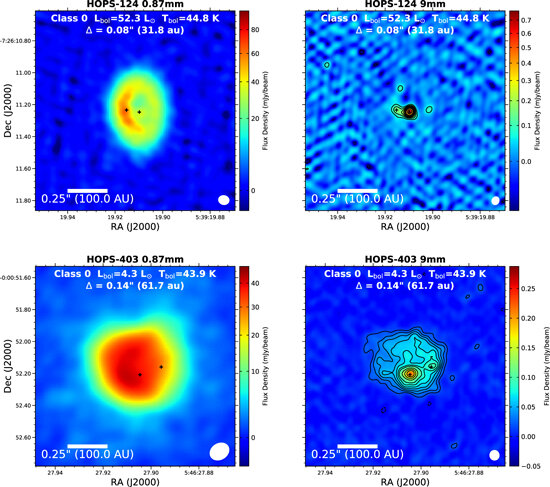Having combined data collected over three decades of observations, an international team of astronomers has discovered three gas-dust disks in a system of a pair of young stars. There are some processes there that indicate formation of new planets.

The star system, which drew the attention of researchers, is marked SVS 13. It is located in the molecular cloud of Perseus at a distance of 980 light years from Earth and consists of two proto-stars separated by a distance of 90 au.
As a result of observations by VLA and ALMA radio telescopes, astronomers discovered that each of the stars is surrounded by a separate protoplanetary disk. One of them has radius of 9 au, and the other — 12 au.

In addition, the system has a third external disk with a radius of 500 au, which surrounds both stars together. According to researchers, it has a spiral structure, which is a “supplier” of stuff for internal disks. In the future, each of them may give rise to new planets.
Current models of formation of planets suggest that they are formed due to the gradual accretion of ice and dust particles in protoplanetary disks around young stars. However, these models usually take into account only single stars such as our Sun. Therefore, the discovery of three protoplanetary disks in the SVS 13 system is an important discovery that will allow scientists to gather valuable information about the formation of planets in binary systems, where gravitational interaction between partners plays an important role.
Another interesting fact is that astronomers have managed to find complex organic molecules in the gas-dust disks around SVS 13. This means that when the planets start forming there, they will already have the necessary building blocks for life.
We should also mention that astronomers recently discovered the largest molecule in the protoplanetary disk.
According to https: //phys.org
